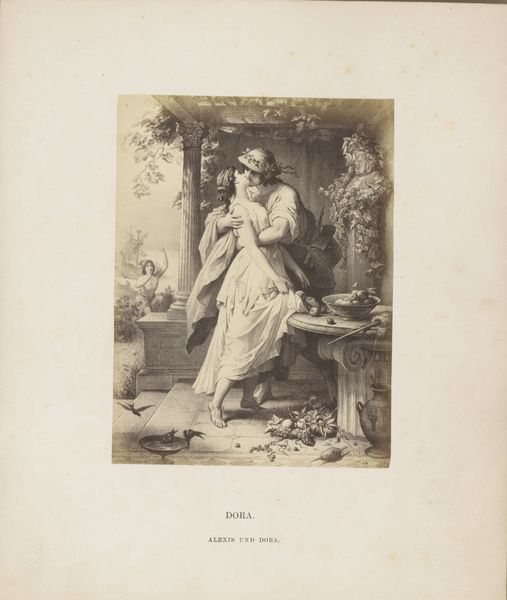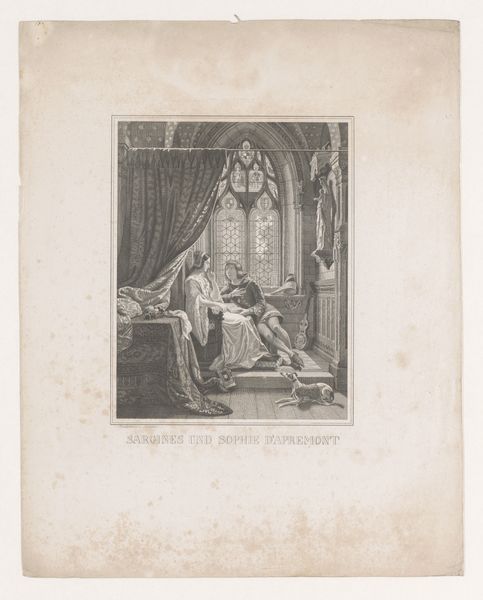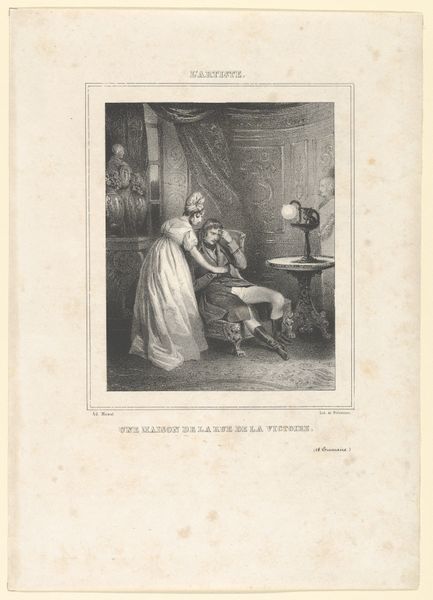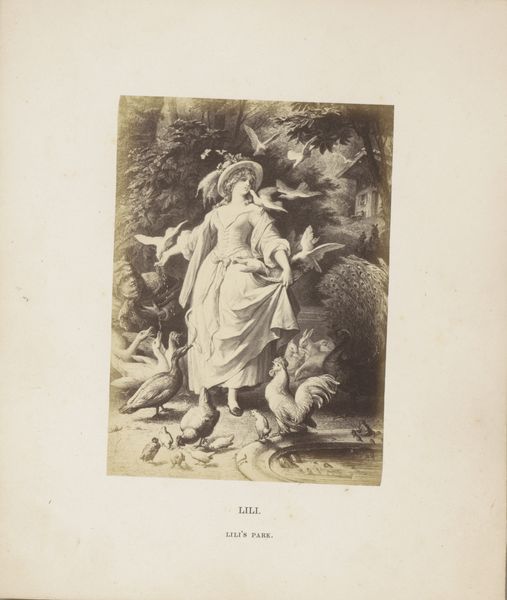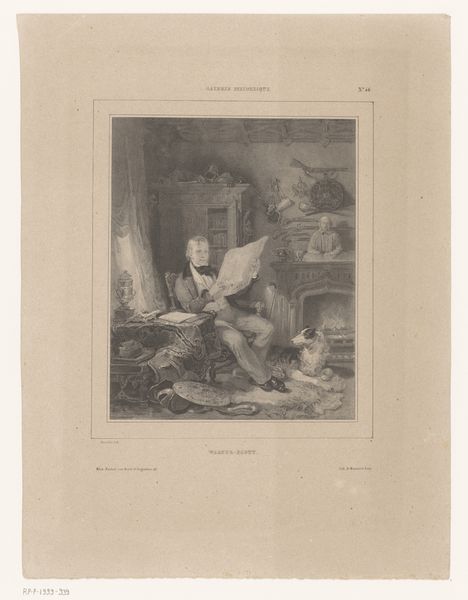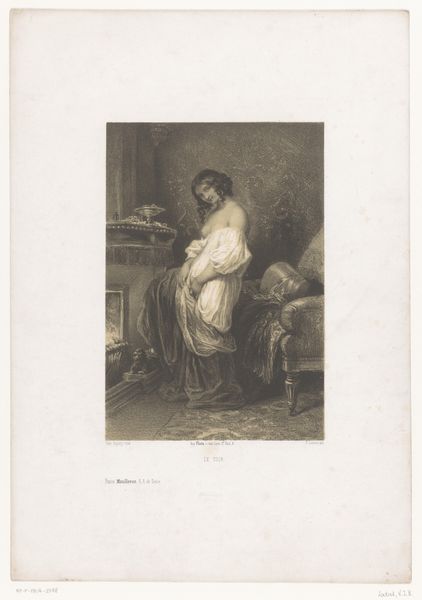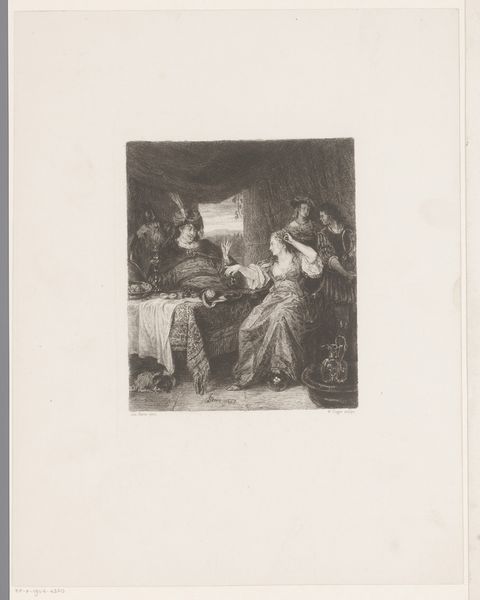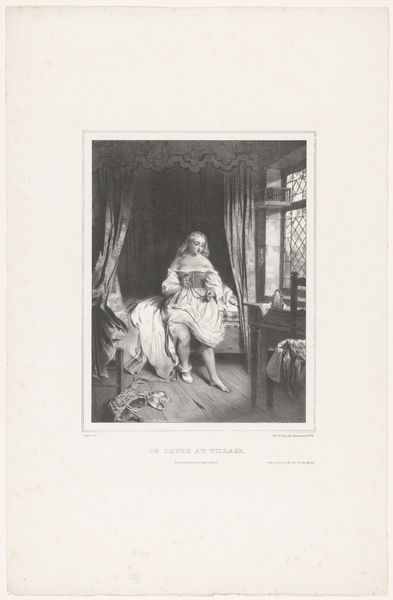
Fotoreproductie van een tekening van Gretchen voor het beeld van de Mater Dolorosa uit Goethe's Faust door Wilhelm von Kaulbach 1850 - 1900
0:00
0:00
Dimensions: height 211 mm, width 178 mm, height 125 mm, width 98 mm
Copyright: Rijks Museum: Open Domain
Curator: This photogravure captures a drawing of Gretchen, or Mater Dolorosa, from Goethe's Faust. It’s after Wilhelm von Kaulbach's original, placing it in a period roughly between 1850 and 1900. What are your first impressions? Editor: It feels incredibly staged, almost theatrical. Gretchen's pose is so dramatic, kneeling before the statue. It looks like it's trying to evoke powerful emotion, but it feels a bit… artificial? What strikes you about the piece? Curator: The "staged" feeling is key. This isn’t just an image; it's participating in a complex network of visual and literary culture. The photograph reproduces a drawing, which was itself interpreting a literary character from Goethe, so there is a constant reproduction of an image, with social undertones. Editor: Can you elaborate on that? Curator: Well, think about the role of museums at the time. Photography was making art accessible to a wider audience. The print as an artistic medium democratised art: no longer limited to the elite few who could visit museums, it was available in peoples’ homes. How does this photogravure then play with the public understanding of art and its consumption? Editor: So it’s like, this piece isn't just about Gretchen's grief, but about how that grief is presented and consumed by the public? About art for the masses. Curator: Precisely. Also note how Romanticism used melodrama to make ethical statements about social values of that era. Is it an exploitative gaze or an attempt at conveying public responsibility? What are your thoughts now? Editor: It’s fascinating to see it less as a straightforward emotional portrayal and more as a reflection of art's role in shaping public sentiment, then, as is continues to do, even now! Thank you, that gave me a lot to consider. Curator: Indeed. Analyzing it this way really highlights the power and, arguably, the responsibilities inherent in visual representation and its influence on collective empathy, across periods and through media.
Comments
No comments
Be the first to comment and join the conversation on the ultimate creative platform.

